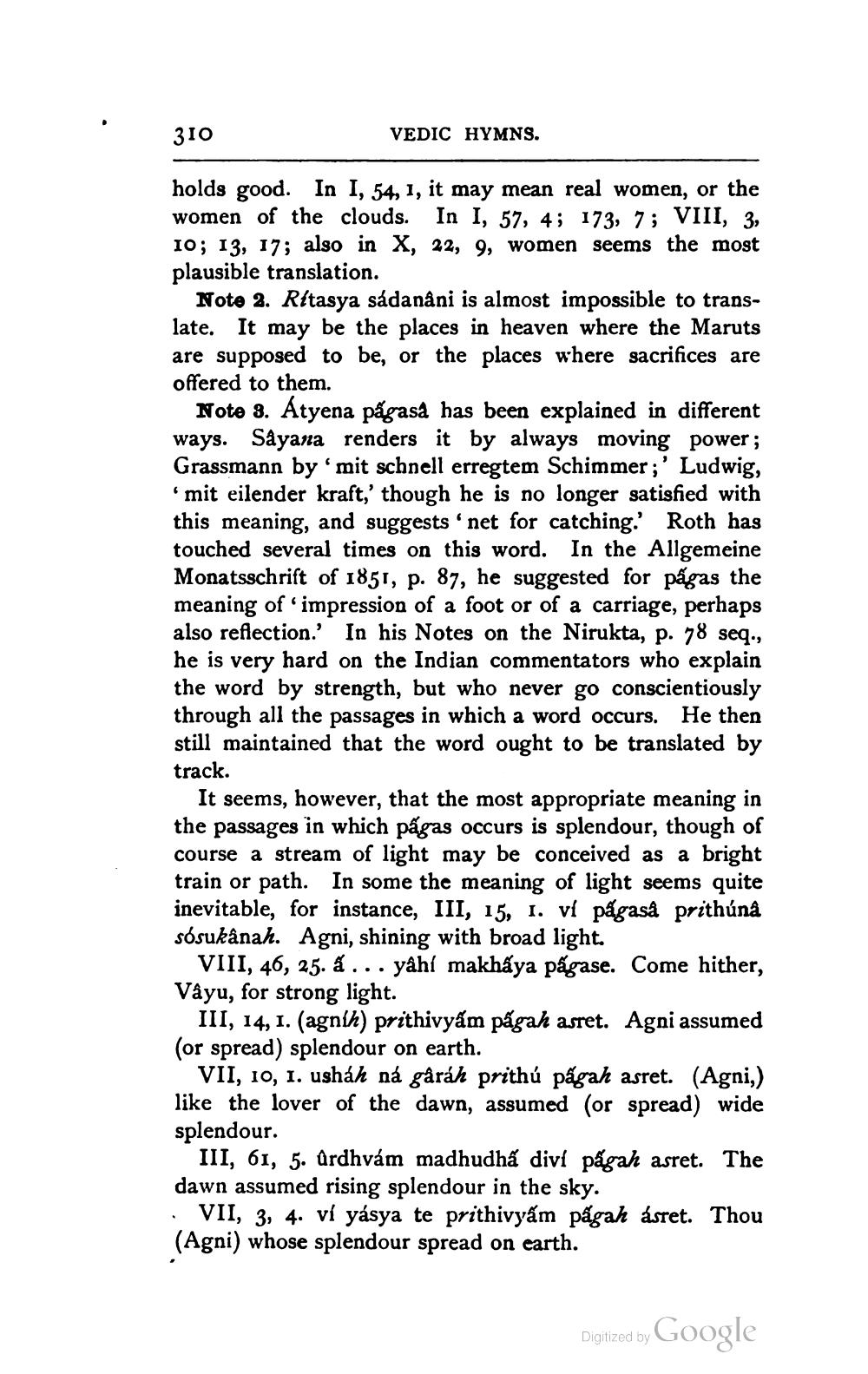________________
310
VEDIC HYMNS.
holds good. In I, 54, 1, it may mean real women, or the women of the clouds. In I, 57, 4; 173, 7; VIII, 3, 10; 13, 17; also in X, 22, 9, women seems the most plausible translation.
Note 2. Rétasya sádanâni is almost impossible to translate. It may be the places in heaven where the Maruts are supposed to be, or the places where sacrifices are offered to them.
Note 3. Atyena págasa has been explained in different ways. Sayana renders it by always moving power; Grassmann by mit schnell erregtem Schimmer;' Ludwig,
mit eilender kraft,' though he is no longer satisfied with this meaning, and suggests net for catching. Roth has touched several times on this word. In the Allgemeine Monatsschrift of 1851, p. 87, he suggested for págas the meaning of 'impression of a foot or of a carriage, perhaps also reflection.' In his Notes on the Nirukta, p. 78 seq., he is very hard on the Indian commentators who explain the word by strength, but who never go conscientiously through all the passages in which a word occurs. He then still maintained that the word ought to be translated by track.
It seems, however, that the most appropriate meaning in the passages in which págas occurs is splendour, though of course a stream of light may be conceived as a bright train or path. In some the meaning of light seems quite inevitable, for instance, III, 15, 1. ví págaså prithúnå sósukânah. Agni, shining with broad light.
VIII, 46, 25. à ... yâhí makhấya págase. Come hither, Vậyu, for strong light.
III, 14, 1. (agník) prithivyám págah asret. Agni assumed (or spread) splendour on earth.
VII, 10, 1. usháh ná gåráh prithú págah asret. (Agni,) like the lover of the dawn, assumed (or spread) wide splendour.
III, 61, 5. Urdhvám madhudhá diví págah asret. The dawn assumed rising splendour in the sky. · VII, 3, 4. ví yásya te prithivyám págah ásret. Thou (Agni) whose splendour spread on earth.
Digitized by
Digilzed by Google




